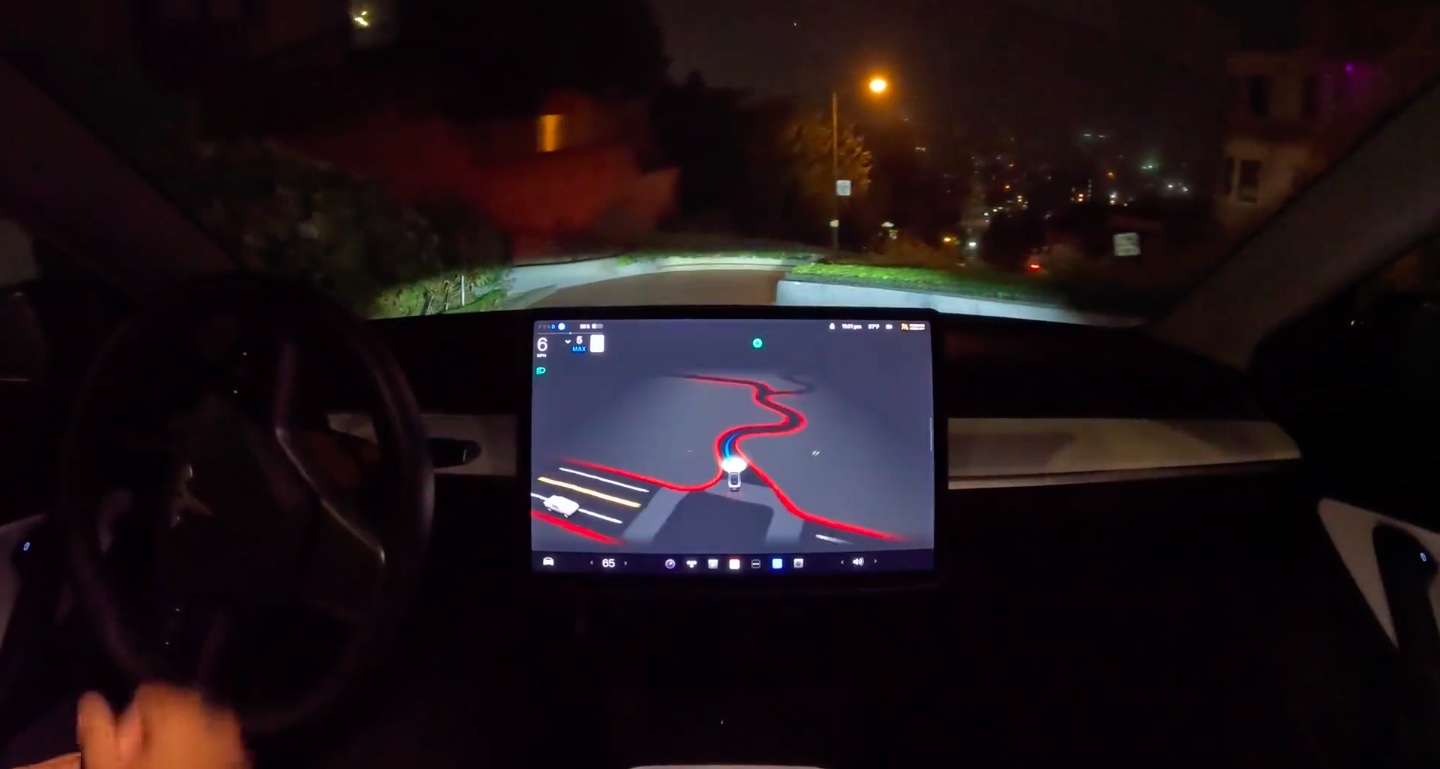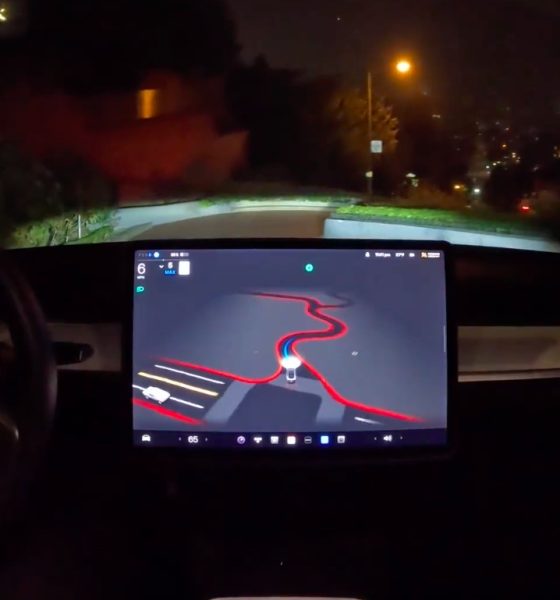Tesla seems to be rolling out FSD Beta v.10.69.2.3 to testers as expected.
With AI Day 2022 now behind us—along with the reveal of Optimus prototypes—Tesla is again concentrating on FSD Beta and its series of 10.69 releases. This week, 10.69.2.3 is expected to roll out to testers.
Beta tester Cameron is one of the first to receive version 10.69.2.3. He shared v.10.69.2.3’s release notes. Tesla tracker Teslascope stated that the latest version had no noteworthy new changes. Instead, FSD Beta v.10.69.3 had a few undocumented bug fixes. The single photo Cameron shared of 10.69.2.3 does look similar to the release notes Tesla provided testers when v10.69 first rolled out.
10.69 Issues Recap
Tesla FSD Beta version 10.69.1 had a few minor issues, including some instances of phantom braking, a few problems with turns—both left and right—and complications with speed limit recognition.
FSD Beta 10.69.2 reduced the instances of the issues most testers reported and version 10.69.2.2 helped the software drive even smoother.
A few testers told Teslarati that some issues have remained from 10.69.1 and 10.69.2, even after 10.69.2.2’s release. For instance, Sandy from Canada noted that his vehicle would recognize speed limit signs and coast to reduce the speed as if it were in Neutral. As a result, the vehicle would not use regen or the brakes to reach the lower speed limit.
Sandy also shared concerns with left turns at traffic light intersections with oncoming traffic. He stated that his Tesla would creep once at the intersections even as oncoming traffic approaches. The Canadian Tesla driver found FSD’s decision to continue approaching the turn “disconcerting,” as he would choose to simply wait at the intersection until it was safe to turn. Fellow FSD Beta tester Dr. Rahaman also told Teslarati that the software performed left turns a bit aggressively.
The main issue testers have reported from 10.69.2.2, however, seems to be lane selection.
“I have tried FSD 10.69.2.2 and it’s good on streets but have some lane selection problems, too. It get[s] confused selecting lanes it always takes the exit lane even though I have to go straight and at [the] end, it stops and tr[ies] to merge in[to] the left lane,” noted Beta tester Pradip.
Tesla extensively talked about its FSD Lane Networks during AI Day 2022 last week. Hopefully, v.10.69.3 will address the lane selection issue multiple Beta testers have been experiencing lately, along with any problems remaining from previous versions.
The Tesla FSD Beta Program now has 160,000 customers, compared to 2,000 in 2021. At AI Day 2022, Elon Musk mentioned that Tesla hopes to release FSD Beta worldwide by the end of the year. However, Musk also cautioned that FSD Beta’s release worldwide would be complex, given all the different rules and regulations in each country.
Are you a Tesla FSD Beta Tester? I’d like to hear from you about your FSD Beta experiences! Contact me at maria@teslarati.com or via Twitter @Writer_01001101.

News
Tesla starts showing how FSD will change lives in Europe
Local officials tested the system on narrow country roads and were impressed by FSD’s smooth, human-like driving, with some calling the service a game-changer for everyday life in areas that are far from urban centers.

Tesla has launched Europe’s first public shuttle service using Full Self-Driving (Supervised) in the rural Eifelkreis Bitburg-Prüm region of Germany, demonstrating how the technology can restore independence and mobility for people who struggle with limited transport options.
Local officials tested the system on narrow country roads and were impressed by FSD’s smooth, human-like driving, with some calling the service a game-changer for everyday life in areas that are far from urban centers.
Officials see real impact on rural residents
Arzfeld Mayor Johannes Kuhl and District Administrator Andreas Kruppert personally tested the Tesla shuttle service. This allowed them to see just how well FSD navigated winding lanes and rural roads confidently. Kruppert said, “Autonomous driving sounds like science fiction to many, but we simply see here that it works totally well in rural regions too.” Kuhl, for his part, also noted that FSD “feels like a very experienced driver.”
The pilot complements the area’s “Citizen Bus” program, which provides on-demand rides for elderly residents who can no longer drive themselves. Tesla Europe shared a video of a demonstration of the service, highlighting how FSD gives people their freedom back, even in places where public transport is not as prevalent.
What the Ministry for Economic Affairs and Transport says
Rhineland-Palatinate’s Minister Daniela Schmitt supported the project, praising the collaboration that made this “first of its kind in Europe” possible. As per the ministry, the rural rollout for the service shows FSD’s potential beyond major cities, and it delivers tangible benefits like grocery runs, doctor visits, and social connections for isolated residents.
“Reliable and flexible mobility is especially vital in rural areas. With the launch of a shuttle service using self-driving vehicles (FSD supervised) by Tesla in the Eifelkreis Bitburg-Prüm, an innovative pilot project is now getting underway that complements local community bus services. It is the first project of its kind in Europe.
“The result is a real gain for rural mobility: greater accessibility, more flexibility and tangible benefits for everyday life. A strong signal for innovation, cooperation and future-oriented mobility beyond urban centers,” the ministry wrote in a LinkedIn post.
News
Tesla China quietly posts Robotaxi-related job listing
Tesla China is currently seeking a Low Voltage Electrical Engineer to work on circuit board design for the company’s autonomous vehicles.

Tesla has posted a new job listing in Shanghai explicitly tied to its Robotaxi program, fueling speculation that the company is preparing to launch its dedicated autonomous ride-hailing service in China.
As noted in the listing, Tesla China is currently seeking a Low Voltage Electrical Engineer to work on circuit board design for the company’s autonomous vehicles.
Robotaxi-specific role
The listing, which was shared on social media platform X by industry watcher @tslaming, suggested that Tesla China is looking to fill the role urgently. The job listing itself specifically mentions that the person hired for the role will be working on the Low Voltage Hardware team, which would design the circuit boards that would serve as the nervous system of the Robotaxi.
Key tasks for the role, as indicated in the job listing, include collaboration with PCB layout, firmware, mechanical, program management, and validation teams, among other responsibilities. The role is based in Shanghai.
China Robotaxi launch
China represents a massive potential market for robotaxis, with its dense urban centers and supportive policies in select cities. Tesla has limited permission to roll out FSD in the country, though despite this, its vehicles have been hailed as among the best in the market when it comes to autonomous features. So far, at least, it appears that China supports Tesla’s FSD and Robotaxi rollout.
This was hinted at in November, when Tesla brought the Cybercab to the 8th China International Import Expo (CIIE) in Shanghai, marking the first time that the autonomous two-seater was brought to the Asia-Pacific region. The vehicle, despite not having a release date in China, received a significant amount of interest among the event’s attendees.
Elon Musk
Elon Musk and Tesla AI Director share insights after empty driver seat Robotaxi rides
The executives’ unoccupied tests hint at the rapid progress of Tesla’s unsupervised Robotaxi efforts.

Tesla CEO Elon Musk and AI Director Ashok Elluswamy celebrated Christmas Eve by sharing personal experiences with Robotaxi vehicles that had no safety monitor or occupant in the driver’s seat. Musk described the system’s “perfect driving” around Austin, while Elluswamy posted video from the back seat, calling it “an amazing experience.”
The executives’ unoccupied tests hint at the rapid progress of Tesla’s unsupervised Robotaxi efforts.
Elon and Ashok’s firsthand Robotaxi insights
Prior to Musk and the Tesla AI Director’s posts, sightings of unmanned Teslas navigating public roads were widely shared on social media. One such vehicle was spotted in Austin, Texas, which Elon Musk acknowleged by stating that “Testing is underway with no occupants in the car.”
Based on his Christmas Eve post, Musk seemed to have tested an unmanned Tesla himself. “A Tesla with no safety monitor in the car and me sitting in the passenger seat took me all around Austin on Sunday with perfect driving,” Musk wrote in his post.
Elluswamy responded with a 2-minute video showing himself in the rear of an unmanned Tesla. The video featured the vehicle’s empty front seats, as well as its smooth handling through real-world traffic. He captioned his video with the words, “It’s an amazing experience!”
Towards Unsupervised operations
During an xAI Hackathon earlier this month, Elon Musk mentioned that Tesla owed be removing Safety Monitors from its Robotaxis in Austin in just three weeks. “Unsupervised is pretty much solved at this point. So there will be Tesla Robotaxis operating in Austin with no one in them. Not even anyone in the passenger seat in about three weeks,” he said. Musk echoed similar estimates at the 2025 Annual Shareholder Meeting and the Q3 2025 earnings call.
Considering the insights that were posted Musk and Elluswamy, it does appear that Tesla is working hard towards operating its Robotaxis with no safety monitors. This is quite impressive considering that the service was launched just earlier this year.










